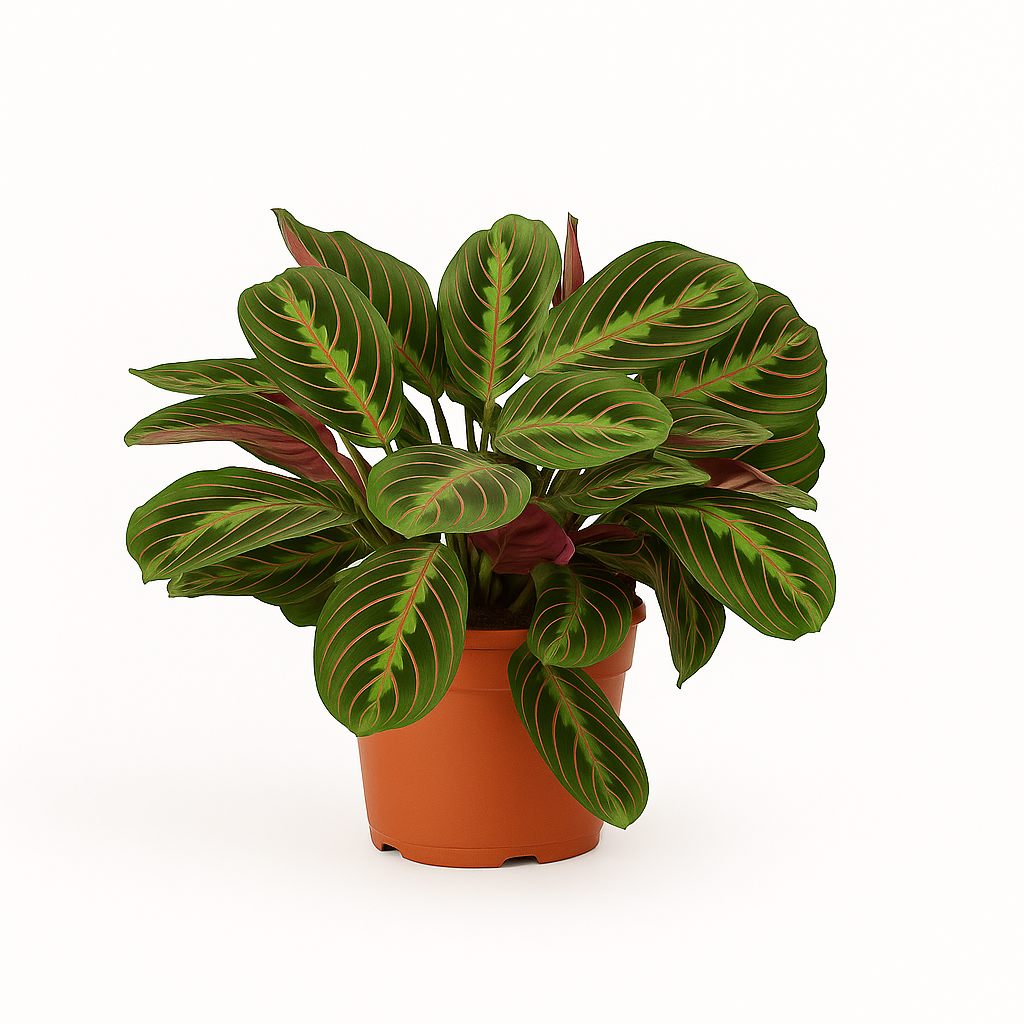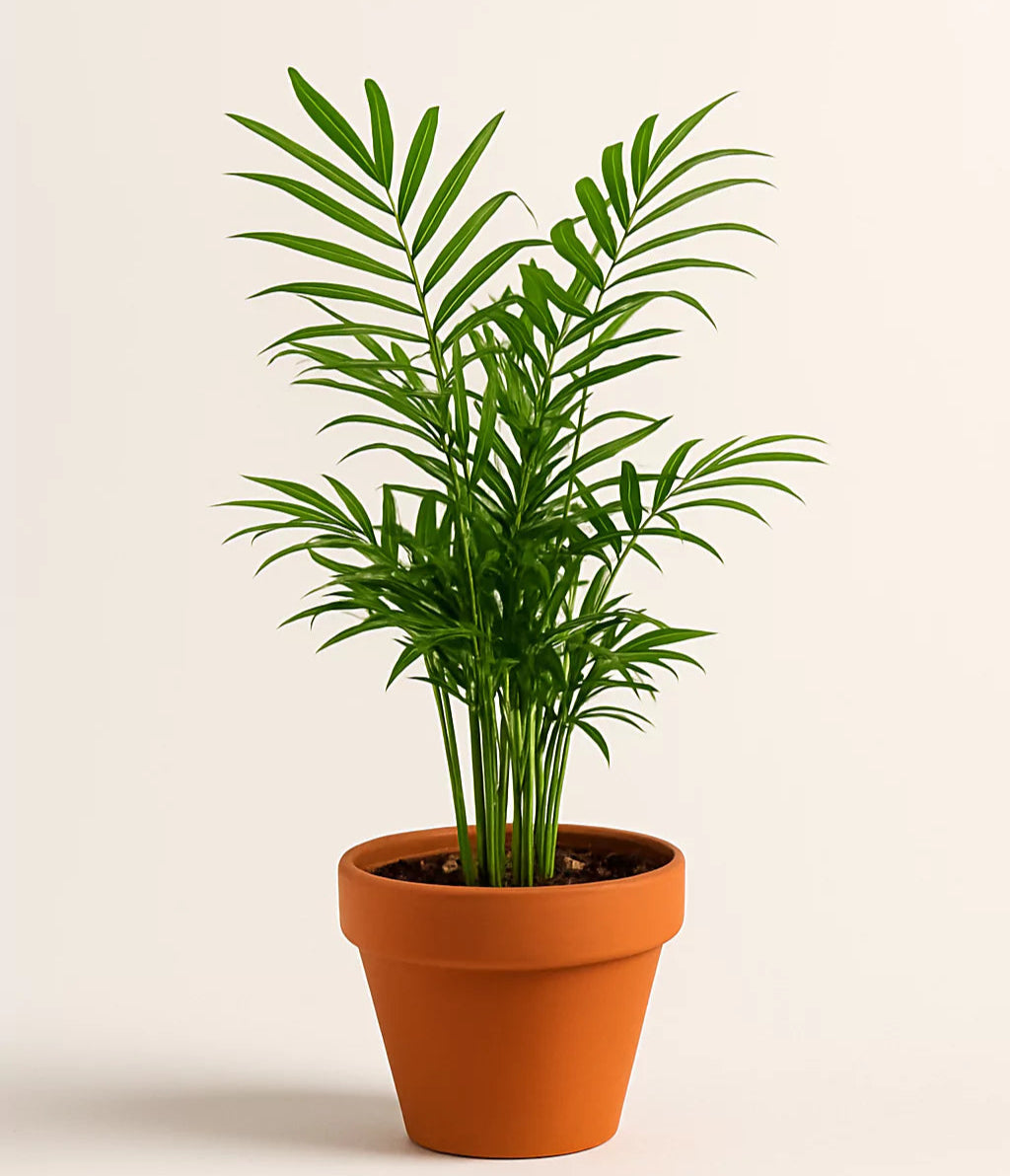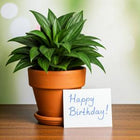Why Humidity Matters for Tropical Houseplants
If your tropical plants are showing brown leaf tips, crispy edges, or stunted growth, low humidity is likely the culprit. Most tropical houseplants originate from rainforests where humidity levels hover between 60-90%, while the average home sits at a dry 30-50%—especially during winter months.
Understanding how to increase humidity for your indoor plants is essential for keeping popular varieties like Philodendron 'Congo Nuclear', Calathea 'Musaica', and Elephant Ear Staghorn Fern healthy and vibrant.
Signs Your Plants Need More Humidity
Before diving into solutions, identify if your plants are suffering from low humidity:
- Brown, crispy leaf tips and edges – The most common symptom
- Curling or drooping leaves – Even when soil is moist
- Slow growth – Particularly during growing season
- Increased pest problems – Spider mites thrive in dry conditions
- Leaf drop – Especially on ferns and prayer plants
9 Effective Ways to Increase Humidity for Indoor Plants
1. Group Plants Together
The easiest, no-cost method is clustering your tropical plants. Through transpiration, plants naturally release moisture into the air. When grouped, they create their own microclimate with higher humidity levels.
Best for: Spathiphyllum Jessica, Peperomia Piccolo Banda, and Pilea 'Chocolate'
Pro tip: Arrange plants with similar light and water requirements together for easier care.
2. Use a Humidifier (The Gold Standard)
A dedicated plant humidifier is the most reliable solution for maintaining consistent humidity. Cool-mist humidifiers are ideal as they won't damage foliage or encourage fungal growth.
Recommended settings:
- Ferns and Calatheas: 60-70% humidity
- Philodendrons and Pothos: 50-60% humidity
- Most tropical foliage: 50-65% humidity
Best for: High-humidity lovers like Green Flame Fern
According to Purdue University Extension, maintaining proper humidity can reduce pest problems and improve overall plant health significantly.
3. Create a Pebble Tray
Fill a shallow tray with pebbles and water, then place your plant pot on top (ensuring the pot bottom stays above water level). As water evaporates, it increases local humidity around the plant.
Important: This method provides minimal humidity increase (5-10%) and works best for small plants or as a supplementary method.
4. Mist Your Plants (With Caution)
While popular, misting provides only temporary humidity relief (10-15 minutes). It's best used as a supplement, not a primary solution.
Misting guidelines:
- Use room-temperature, filtered water
- Mist in the morning so leaves dry before nightfall
- Avoid misting fuzzy-leaved plants or those prone to fungal issues
- Never mist in direct sunlight (can cause leaf burn)
Safe to mist: Syngonium Cream Allusion, Philodendron White Measure
5. Move Plants to Naturally Humid Rooms
Bathrooms and kitchens naturally have higher humidity from showers, cooking, and running water. If these rooms have adequate light, they're perfect for humidity-loving plants.
Ideal candidates: Philodendron Jose Bueno, Chinese Evergreen 'Lady Valentine'
Consideration: Ensure proper lighting—most bathrooms lack sufficient natural light for plant growth.
6. Use a Terrarium or Cloche
Enclosing plants in glass containers creates a self-sustaining humid environment. This works exceptionally well for small tropical plants and propagations.
Best practices:
- Provide indirect light to prevent overheating
- Open periodically for air circulation
- Monitor for mold or fungal growth
7. Place Water Bowls Near Heat Sources
Positioning bowls of water near radiators, heating vents, or sunny windows increases evaporation and ambient humidity. This passive method works well in winter when heating systems dry out indoor air.
8. Install a Whole-Room Humidifier
For serious plant collectors, a whole-room or HVAC-integrated humidifier maintains consistent humidity throughout your space. This benefits both your plants and your health.
The EPA recommends maintaining indoor humidity between 30-50% for human comfort, though many tropical plants prefer slightly higher levels.
9. Reduce Air Flow and Drafts
Fans, air conditioning, and heating vents rapidly dry out air around plants. Position humidity-sensitive plants away from direct airflow while ensuring adequate ventilation to prevent fungal issues.

Measuring Humidity: Tools You Need
Invest in a hygrometer (humidity meter) to monitor levels accurately. Digital hygrometers cost $10-20 and provide instant readings. Place them near your plant groupings for accurate microclimate measurements.
Target humidity levels by plant type:
- High humidity (60-80%): Ferns, Calatheas, Alocasias, Anthuriums
- Moderate humidity (50-60%): Philodendrons, Monsteras, Syngoniums, Hoyas
- Lower humidity (40-50%): Pothos, Snake Plants, ZZ Plants, Chinese Evergreens

Common Humidity Mistakes to Avoid
Over-Misting
Excessive misting can promote fungal diseases, bacterial leaf spot, and pest problems. It's not a substitute for proper humidity management.
Ignoring Air Circulation
High humidity without airflow creates perfect conditions for mold and rot. Use gentle fans or open windows periodically.
Wet Pebble Trays Touching Pot Bottoms
This leads to overwatering and root rot. Always keep pot bottoms elevated above water level.
Misting at Night
Leaves staying wet overnight invites fungal infections. Always mist in early morning.
Seasonal Humidity Adjustments
Winter: Heating systems drastically reduce indoor humidity. Increase humidifier use and group plants more closely.
Summer: Air conditioning removes moisture. Monitor levels and adjust accordingly, though natural humidity is often higher.
Spring/Fall: Transitional seasons may require less intervention as outdoor humidity levels moderate indoor conditions.
Best Tropical Plants for Beginners
If you're new to tropical plant care, start with more forgiving varieties that tolerate average home humidity:
- Heartleaf Philodendron – Extremely adaptable, tolerates 40-60% humidity and low light
- Philodendron Velvet – Easy care with stunning foliage, forgiving of humidity fluctuations
- Mini Monstera – Low-maintenance tropical beauty, perfect for beginners
- Money Tree – Tolerates lower humidity and brings good luck to your space
- Maranta 'Lemon Lime' – Pet-friendly prayer plant that adapts well to average home conditions
- Maranta Red Prayer – Stunning moving leaves, handles 50-60% humidity easily

Advanced Tip: Create a Plant Cabinet
Dedicated plant cabinets with built-in humidifiers and grow lights offer ultimate control over growing conditions. These enclosed systems maintain 70-80% humidity effortlessly, perfect for rare aroids and high-humidity species.
The Bottom Line
Increasing humidity for tropical plants doesn't require expensive equipment or complicated setups. Start with simple methods like grouping plants and using pebble trays, then invest in a humidifier if you're growing humidity-sensitive varieties.
Monitor your plants' response—healthy new growth, vibrant foliage, and absence of brown tips indicate you've found the right balance. Remember that consistent humidity is more important than achieving perfect levels.
Ready to expand your tropical plant collection? Browse our selection of humidity-loving beauties and create your own indoor jungle with confidence.
For more plant care guidance, explore our Pothos Care 101 guide and Ultimate Guide to Snake Plants.








